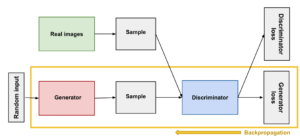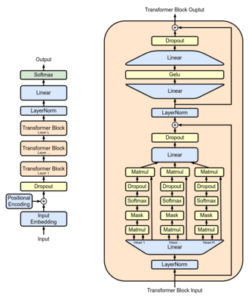Generative AI, a subfield of artificial intelligence focused on creating new content, has undergone a remarkable evolution in recent years. From its initial pixelated outputs to its current capabilities of generating realistic images, text, and even music, the journey of generative AI has been nothing short of fascinating.
1. The Birth of Generative AI: Early Models and Techniques
-
Generative Adversarial Networks (GANs): Introduced in 2014, GANs revolutionized the field by pitting two neural networks against each other: a generator that creates new data and a discriminator that tries to distinguish it from real data. This adversarial process pushes both networks to improve, eventually generating increasingly realistic outputs.
-
Variational Autoencoders (VAEs): VAEs compress data into a latent space, allowing for the manipulation and generation of new data points. This approach is particularly useful for generating realistic images that retain the essential features of the training data.

2. The Rise of Generative Models: Deep Learning Takes Center Stage
-
Deep Convolutional Generative Adversarial Networks (DCGANs): Building on the success of GANs, DCGANs leverage the power of convolutional neural networks to generate high-quality images. This architecture is responsible for many of the stunningly realistic images we see today.

-
Transformer-based Models: Initially designed for natural language processing tasks, transformers have found surprising success in generating text. Models like GPT-3 and LaMDA are capable of producing human-quality text, raising fascinating questions about the future of language and communication.
3. Beyond Images and Text: Expanding the Frontiers of Generative AI
-
Generative Pre-trained Transformers (GPTs): GPTs are large language models trained on massive amounts of text data. They can generate various creative text formats, including poems, code, scripts, musical pieces, email, letters, etc.

-
Style Transfer: This technique allows for transferring the style of one image to another, opening up creative possibilities for artistic expression and image manipulation.

-
Music Generation: AI can now compose music in various styles, ranging from classical to pop and even experimental. This has the potential to democratize music creation and lead to the discovery of new musical forms.
4. The Future of Generative AI: Opportunities and Challenges
- Enhancing Creativity: Generative AI can assist artists, designers, and writers by automating tedious tasks and generating new ideas.
- Personalization: AI-powered tools can personalize content and experiences for individual users, leading to more engaging and interactive applications.
- Accessibility: Generative AI can make creative tools and platforms more accessible to people with disabilities, fostering greater inclusivity in the creative process.
- Ethical Concerns: The potential for misuse of generative AI, such as the creation of deepfakes or biased content, necessitates careful consideration of ethical implications and responsible development practices.
Conclusion:
Generative AI has come a long way since its early days, demonstrating remarkable capabilities in creating new and original content. As the field continues to evolve, we can expect even more groundbreaking applications that will shape the future of various industries and aspects of our lives. However, it is crucial to acknowledge the ethical challenges and ensure that generative AI technologies are developed and used responsibly for the benefit of all.

